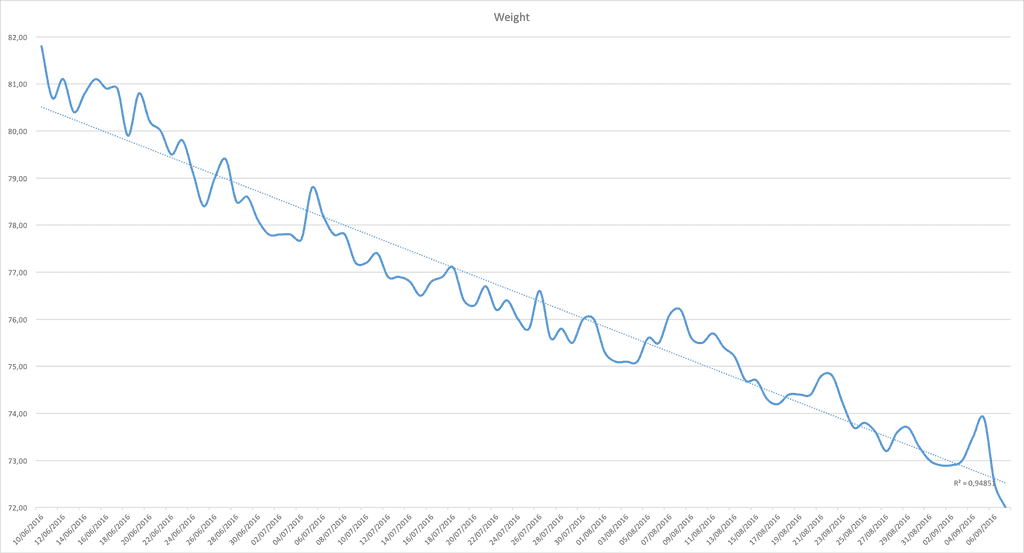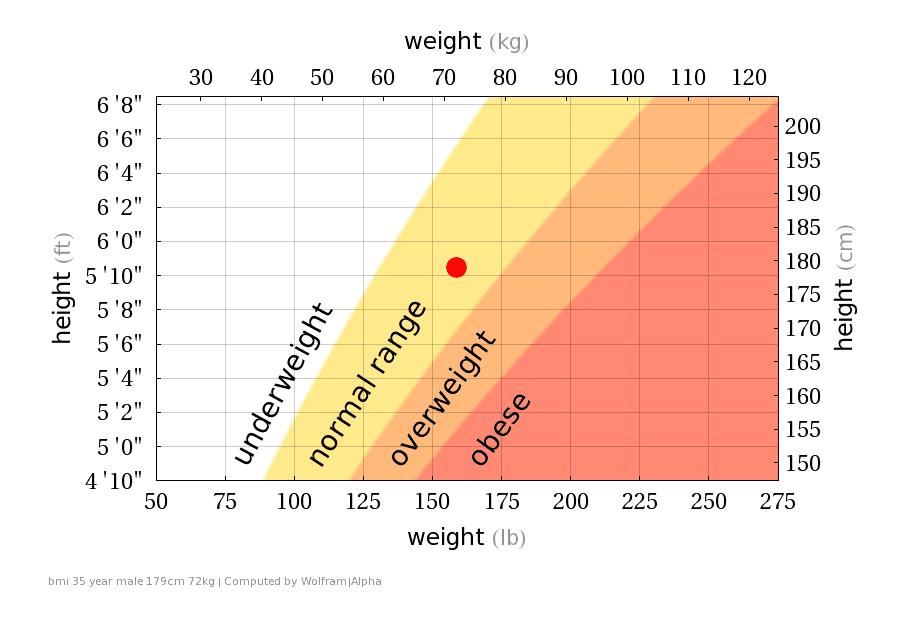TL; DR
This is my personal experience of losing weight. I was 82 kg in June 2016, now I am 72 kg.
Disclaimer: I’m neither a doctor nor a self-studied smartass who knows a lot about dietology and human physiology. If something worked for me, it doesn’t mean it will work for you.

Decision
I'm a male, 35 years, 179 cm. A few months ago I drank one or two 0.33L beers several times in a week. My breakfast was usually a bread with a thick layer of Nutella and a 0.5L Coca-Cola. For the other hand, I used to jog from time to time and I still ride my bike about 20 km every working day.
I thought that my active life will save me from obesity, but one day I realized that my belly is visible even if I suck my stomach in.
The last drop was when all my M-sized t-shirts became too small so I had to wear L-size. In June 2016, I bought scales and measured my weight. It was 82 kg (25.6 BMI), which means overweight.

In next three months, I managed to drop 10 kilos with help of Ketogenic diet. I will explain what is it below, but first, a few words about the other things that did or did not help me in my endeavor.
These things don’t work
Add more gym and cardio
Works up to some limit:
Even when I was preparing for the marathon and ran up to 60 kilometers per week (maximum 32 km at once), I was not so lean as I am now. Cardio is helpful, but without diet, it is an incomplete solution.
Count calories and burn more than you eat
Hard to follow:
It sounds like a simple arithmetics: burn more calories than you eat. In real life, it means: “know what do you eat and how much”. This is very imprecise approach unless you carefully measure all your meals.
Track your motion activities
Motivates for a week or two:
I tried to use Jawbone UP several times in my life. After a month it tells nothing new — same home and work activities, workdays and weekends trends. It kept asking me to walk 10 thousand steps even if I cycled 40 kilometers in the same day. This thing is definitely like a new to-do list — gives you an illusion of control, but does not close your tasks for you.
Moreover, Jawbone UP is still bad in Apple Health integration and battery lifetime is less than promised.
Eat at least six times in a day
Hard to follow:
The best I managed to do in that direction is to not skip breakfast.
These things work:
Now or never
“Now or never”. This phrase helped me many times in my life. I just said to myself that if I will not do it now, I will never do it. I’m not getting younger or healthier every year. If this is hard to do right now, it will be impossible to do later on.
Keeping things simple
Complex solutions are hard to follow. If possible, try to avoid complex solutions.
Lifesum app works just fine
Lifesum app one of the simple solutions that work for me. I write down every meal I eat but instead of counting calories, I pay more attention to what exactly I eat: is it reach of carbohydrates, protein or fat?
Ketogenic diet
The ketogenic diet is very easy to follow:
- Eat no more than 20 g carbohydrates per day (moderate option — 50 g)
- Eat enough protein
- Eat a lot of fat
- Drink water
This is it! Just by following these rules I lost 3 kilograms every month 3 months in a row.
The trick is that our body likes to burn sugar, so we are addicted to sugar and we feel bad when we don’t have it. When our body gets sugar, insulin burns glucose produces fat and our body demands more sugar again. Without carbohydrates and if there is enough amount of protein and fat, our body gives up to demand sugar and starts to burn our own fat. When our body converts our fat to ketone bodies — these guys can deliver energy instead of glucose.
There is still our brain who can’t use ketone bodies and needs glucose, but our body can produce enough glucose from protein, so when all other systems operate on ketone bodies, it’s enough glucose for the brain.
How it goes
I tried this diet for a month and my goal was to drop two kilograms: from 82 to 80. I’ve reached the goal in two weeks!
Then I adjusted the goal to 77 kg (-5 kg) and I was 77 kg in a month.
Now, after 3 months, I’m 72 kg (-10 kg) and don’t feel any need to stop the diet because it’s not hard to follow.

The important thing to notice is that I losing only fat, not muscles. My chin-ups and push-ups are even better than before the diet.
Cardio gets harder without carbohydrates, but jogging gives me more pleasure now: I definitely feel the difference of my own bodyweight now and three months back.
Apart cardio, my fatigability did not increase and my performance didn’t drop.
Hints
The common question I hear: “is it hard to not to eat sugar”? It’s not hard at all if you eat enough fat.
We are addicted to sugar while we eat it. If we don’t eat it, our body stops sending us requests to get more sweet things.
I ate a piece of candy once during the diet. I didn’t want it before, but once I ate it, I started to feel a hunger and a great desire to eat more sweets. This is like alcohol or drug addiction.
A simple thing I do if I want more sugar: I eat more fat. The same I do when I’m hungry. More fat FTW!
Drinking water is also important: I usually drink at least 2 liters per day.
This is it. I hope this text will be useful for you.